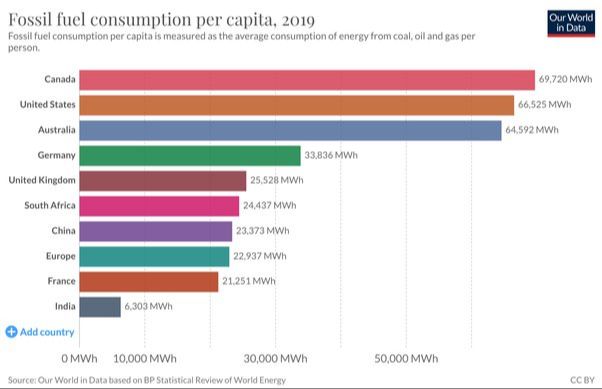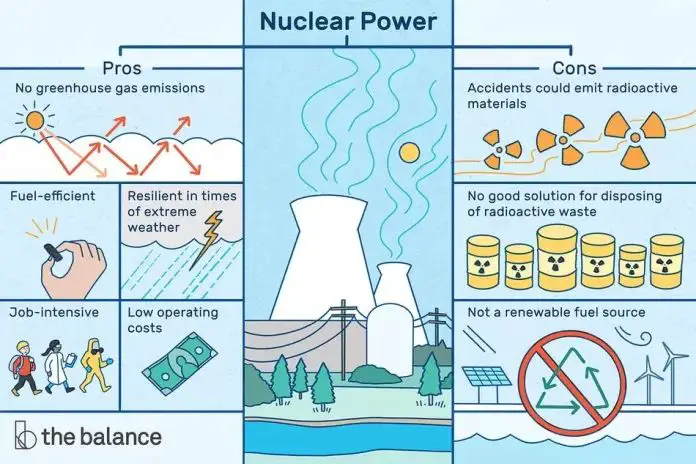What Country Uses The Most Non Renewable Energy?

Non-renewable energy sources come from finite resources that cannot be replenished as quickly as they are consumed. They include fossil fuels like coal, oil, and natural gas, as well as nuclear energy from uranium. Global usage levels of non-renewable energy matter because these finite resources are being depleted, and burning fossil fuels produces greenhouse gases that contribute to climate change. According to the U.S. Energy Information Administration, about 84% of the world’s energy consumption comes from non-renewable sources.
Fossil Fuels
Fossil fuels like coal, oil, and natural gas make up the majority of non-renewable energy used worldwide. According to the blog Resource Watch, the top three countries that consume the most fossil fuels are China, the United States, and India [1]. Together, these three countries account for over half of global fossil fuel consumption. Coal is one of the dirtiest fossil fuels and is a major contributor to air pollution and climate change. China consumes around half of the world’s coal, followed by India and the United States. When it comes to oil, the United States is the top consumer, using over 19 million barrels per day. China and India once again follow behind. Natural gas consumption is highest in the United States, Russia, and Iran respectively.
Nuclear
Nuclear power is a significant source of electricity in some major economies. According to the World Nuclear Association, as of December 2021, the top nuclear energy producing countries are the United States, China, France, Russia, South Korea, Canada, and Ukraine.1 The United States has the most nuclear generation capacity, with 93 nuclear reactors producing 771,638 GWh of electricity in 2021. China ranks second with 53 reactors producing 383,205 GWh. France gets over 70% of its electricity from 56 nuclear reactors. Russia has 36 reactors generating 208,443 GWh. South Korea, Canada, and Ukraine round out the top nuclear energy producers globally.
China Leads in Total Non-Renewable Energy Consumption
China is the world’s largest energy consumer and lead’s the world in total consumption of non-renewable energy sources like coal, oil, and natural gas. According to the U.S. Energy Information Administration (EIA), China’s primary energy consumption totaled 3.3 billion tonnes of oil equivalent in 2020. Fossil fuels like coal, oil, and natural gas accounted for approximately 84% of China’s total energy consumption that year.
Coal makes up the largest share of China’s energy mix at 56%, followed by oil at 19% and natural gas at 8% as of 2020 (EIA). China accounts for over half of global coal consumption, consuming 4.1 billion short tons in 2020. While China has invested heavily in renewable sources like solar, wind, and hydropower in recent years, coal continues to dominate its energy portfolio due to its reliability and affordability.
However, China’s reliance on fossil fuels has started to shift. The share of non-fossil fuels in China’s total installed electricity generation capacity surpassed 50% in 2022, according to China’s National Energy Administration (Reuters). This demonstrates China’s efforts to decarbonize its economy and meet its climate goals under the Paris Agreement, although coal and other fossil fuels still make up the majority of its primary energy consumption currently.
United States
The United States is the second highest consumer of non-renewable energy in the world, after China. According to the U.S. Energy Information Administration, in 2021 81% of total U.S. energy production came from fossil fuels like petroleum, natural gas, and coal. Nuclear power accounted for 8% in 2021. The remaining 11% came from renewable sources like hydro, wind, solar, and biomass.
The U.S. continues to rely heavily on non-renewable energy to meet its energy demands. High consumption of fossil fuels like petroleum for transportation contributes to air pollution and climate change. However, the U.S. has rapidly increased its renewable energy capacity in recent years, suggesting a shift underway towards cleaner energy. Wind and solar generation have grown especially fast compared to other renewables.
India
India is the third largest consumer of fossil fuels in the world after China and the United States. India’s energy demand is rapidly rising due to population growth, urbanization and economic development. According to the International Energy Agency, over 80% of India’s energy needs are met by three fuels – coal, oil and solid biomass. Coal has driven the expansion of electricity generation and industry in India.
India’s demand for coal has been growing rapidly, with consumption more than doubling between 2005 and 2019. As of 2019, coal accounted for over 70% of India’s electricity generation. India relies heavily on imported oil, which accounted for around 85% of its oil demand in 2019. India’s oil consumption is projected to more than double between 2019 and 2040. Fossil fuels are likely to continue meeting the majority of India’s energy demand in the coming decades despite growth in renewables, driven by rising incomes and living standards.
Russia
Russia is one of the largest producers and consumers of oil and natural gas in the world. According to the U.S. Energy Information Administration, Russia was the largest producer of total petroleum and natural gas and the 3rd largest petroleum consumer in 2020 (Russia’s Energy Overview 2021). The oil and gas sector accounts for about 60% of Russia’s exports and provides 40% of the country’s federal budget revenues (Energy in Russia).
As of 2018, natural gas accounted for 54% of Russia’s electricity generation, nuclear power provided 18%, hydropower accounted for 17%, while other renewables like solar and wind only contributed around 1% (Energy in Russia). While Russia has set targets to increase its renewable energy production, fossil fuels like oil and natural gas are still expected to dominate its energy mix for the foreseeable future. Renewable sources face challenges scaling up due to lack of infrastructure and government support.
Trends
The global energy mix is shifting as countries try to reduce their reliance on fossil fuels and increase renewable energy sources. According to the International Energy Agency (IEA), renewable electricity generation has been increasing in OECD countries, growing from 19% in 2008 to 27% in 2018. Meanwhile, non-renewable electricity generation fell from 81% to 73% in that time period.
Some key trends by energy source:
- Oil: Still the largest source globally, but facing reduced demand in many countries as alternatives grow.
- Coal: Decreasing in Europe, flat in China, still heavily used in India.
- Natural gas: Increasing in the US from shale gas, but facing scrutiny as a fossil fuel.
- Nuclear: Stable or declining as plants age and few new ones built.
- Hydro: Growing steadily, especially in developing countries.
- Wind and solar: Seeing rapid growth as prices drop dramatically.
Many experts expect the transition away from fossil fuels towards renewables will continue in coming decades, but the pace remains uncertain.
Impacts
The heavy use of non-renewable energy sources like fossil fuels has major negative impacts on the environment and human health. Burning fossil fuels produces large amounts of carbon dioxide, which leads to climate change and global warming (Source: https://www.nrdc.org/stories/fossil-fuels-dirty-facts). Fossil fuel emissions also contribute to air pollution, resulting in issues like asthma, cancer, heart disease, and premature death (Sources: https://www.hsph.harvard.edu/c-change/subtopics/fossil-fuels-health/, https://www.eesi.org/papers/view/fact-sheet-climate-environmental-and-health-impacts-of-fossil-fuels-2021). The extraction, refining, and transportation of fossil fuels can also damage ecosystems and contaminate water sources.
Conclusion
In summary, China was found to be the largest consumer of non-renewable energy globally, relying primarily on coal for power generation. China accounted for over 50% of global coal consumption in recent years. The United States and India were the next largest consumers of non-renewable energy, with the US using a mix of coal, oil and natural gas, while India relied predominantly on coal.
Several concerning trends were highlighted, including continued growth in global fossil fuel consumption, with coal expected to remain dominant in growth markets like China and India through 2040. The environmental impacts of non-renewable energy use are immense, contributing to climate change, air pollution, and health problems.
To reduce dependence on non-renewable sources, countries can implement policies encouraging renewable energy growth, energy efficiency, carbon pricing, and electrification of end uses like transportation. Individuals can also make choices to conserve energy and support clean power. With comprehensive action, a transition away from unsustainable fossil fuels is possible, improving energy security, environmental sustainability and public health.




